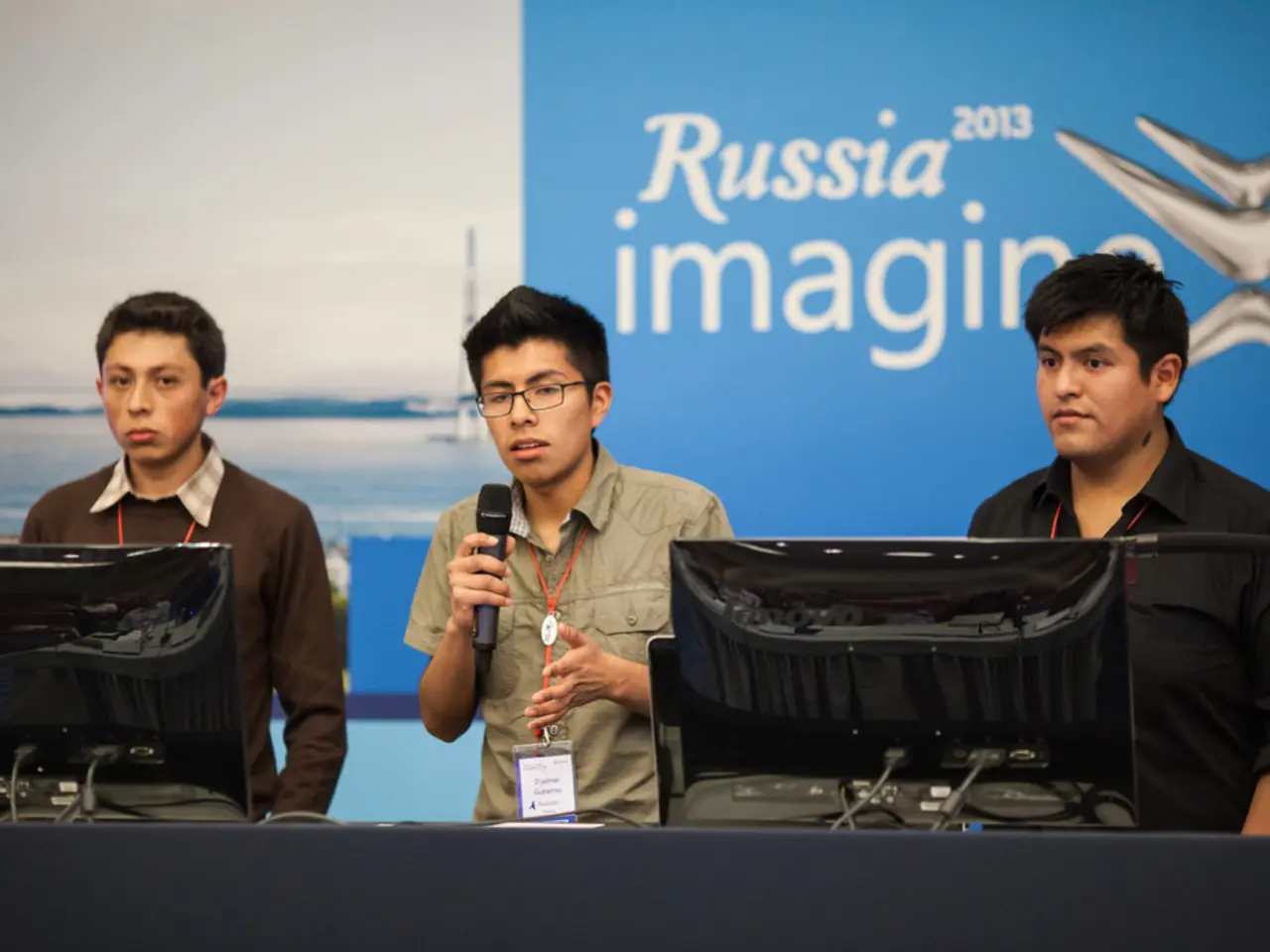Increase in AI-driven assaults as Chief Information Security Officers (CISOs) focus on AI security threats
According to a recent report by cybersecurity firm Team8, AI-powered attacks have become a significant security concern for Chief Information Security Officers (CISOs) worldwide. One in four CISOs reported experiencing AI-generated attacks on their company networks in the past year, highlighting the growing threat of AI in the cybersecurity landscape.[1][3][4]
Key trends and challenges identified in the report include:
- Wide Adoption of AI Agents: About 67% of enterprises are currently using AI agents, and nearly another quarter plan to deploy them soon, increasing both opportunities and attack surfaces.[1][2][3]
- AI Prioritization: CISOs now prioritize AI risks above traditional concerns such as vulnerability management, data loss prevention, and third-party risk.[1]
- Security and Governance of AI Agents: Securing AI agents themselves is a critical challenge mentioned by 37% of CISOs, coupled with ensuring employee use of AI tools aligns with security and privacy policies (36%).[1]
- New Attack Vectors: AI-powered phishing, malware that autonomously evolves, and attacks that simulate legitimate human activity complicate threat detection and response.[1][4]
- Internal Risks from Enterprise AI Adoption: Companies face challenges from unintended security consequences arising from their own AI usage, placing CISOs in a difficult position as they must enable AI adoption while mitigating its risks.[1]
- Shadow AI Governance: Weak controls on unofficial or unanalyzed AI tool usage (shadow AI) persist, increasing risk exposure.[2]
- Need for Advanced Detection Metrics: Because AI-driven threats operate with velocity and sophistication, there is a growing emphasis on metrics such as time to exploitation and activity velocity to detect them effectively.[1][4]
- AI Replacing SOC Tasks: A majority of CISOs (77%) anticipate AI will gradually replace some Security Operations Center functions, illustrating AI’s dual role as both a defensive tool and a threat vector.[2]
The report also suggests that executives are worried about the unintended security consequences of their own companies' use of AI. The demand for effective 'allow-by-default' controls is acute, as security teams grapple with shadow AI usage and the absence of enterprise-grade governance frameworks.
Despite these challenges, the majority of companies (already nearly 7 in 10) are using AI agents, with another 23% planning to deploy them next year. As AI continues to permeate various aspects of business operations, CISOs face a fast-moving, poorly understood AI threat landscape with immature controls, requiring them to balance enabling AI adoption across enterprises while managing escalating, sophisticated AI-powered cyber threats.[1][4]
This comprehensive view is based on interviews with over 110 CISOs reported by Team8 in their 2025 CISO Village survey and related analysis in industry news and research briefs.[1][2][3][4] The report does not provide details about the specific AI agents or vendors mentioned.
[1] Team8. (2021). 2025 CISO Village Report. [Online]. Available: https://www.team8.co/resources/2025-ciso-village-report/ [2] Cybersecurity Ventures. (2021). The State of AI in Cybersecurity. [Online]. Available: https://cybersecurityventures.com/artificial-intelligence-in-cybersecurity/ [3] Forbes. (2021). The AI-Powered Cybersecurity Threat Landscape. [Online]. Available: https://www.forbes.com/sites/forbestechcouncil/2021/03/08/the-ai-powered-cybersecurity-threat-landscape/?sh=67c547055f4f [4] Dark Reading. (2021). The AI-Powered Threat Landscape. [Online]. Available: https://www.darkreading.com/ai/the-ai-powered-threat-landscape/d/d-id/1339401
- CISOs globally are facing an increase in AI-generated attacks, which have become a substantial security concern, due to the wide adoption of AI agents in enterprises and the growing threat of AI in the cybersecurity landscape.
- Security operations centers (SOC) are anticipating AI will gradually replace some of their functions, acknowledging AI's dual role as both a defensive tool and a threat vector in the cybersecurity operations.
- Malware that autonomously evolves, AI-powered phishing, and attacks that simulate legitimate human activity pose new challenges for threat detection and response in cybersecurity, as these complex and sophisticated threats operate with velocity.
- To manage the escalating, AI-powered cyber threats, CISOs are concerned about the unintended security consequences from their own companies' use of AI, emphasizing the urgent need for effective 'allow-by-default' controls, mature enterprise-grade governance frameworks, and advanced detection metrics such as time to exploitation and activity velocity.




